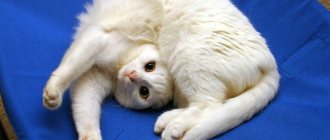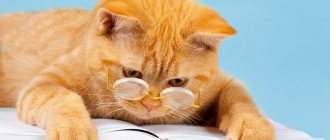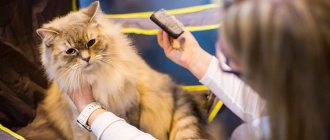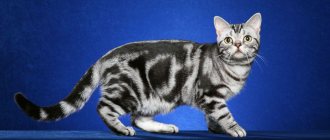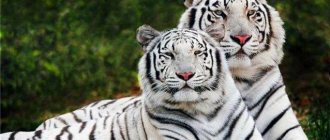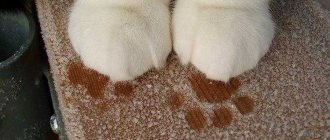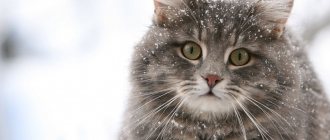Features of the felinologist profession
Felinology belongs to the branch of zoology. Therefore, ordinary cat lovers cannot be classified as part of this trend.
Typically, felinologists breed cats, run nurseries, cat clubs, and organize cat shows.
The main social benefit of cats is the elimination of rodents in museums, churches, and exhibition halls. For example, cats catch mice in the Hermitage.
Photo source: Anel Rossouw/pexels
Types of specialists: livestock specialist, breeder, expert
The cat industry involves a large number of people from different professions.
Workers in this area include nursery owners, creators of purebred cat clubs, judges of cat shows, specialists in the development and production of food, hygiene products, and medicines. This also includes an army of scientists conducting research in various aspects of the life of four-legged animals. All of them are closely interconnected within the framework of mutual assistance.
Livestock specialists
People who study the behavior, living conditions of animals and ways to improve them. Food, medicines, and care products are also their lot. For this purpose, they are provided with scientific and technical laboratories. Having a specialty, people can work as course teachers, consultants on general and narrow topics. Livestock specialists are required to obtain a higher education.
Breeders
These are the leaders of their own nurseries, cat clubs, and associations. Their passion is breeding and selecting purebred cats. Anyone can become a breeder, but, as a rule, they do not receive special education. It is enough to take a course in felinology, because to understand the topic, you need serious intellectual knowledge. An occupation can become financially successful, but profitability is determined by:
- quality of kittens;
- demand for certain breeds;
- competition;
- professionalism in breeding work.
Expert felinologist
The chief cat expert has the final say in determining the winners.
The chief judge who gives a verdict to purebred specimens at exhibitions. He's doing the culling. His task is to understand the characteristics of breeds down to the smallest detail, to clearly know the evaluation criteria and standards. The latter are officially approved by the World Cat Federation (WCF) and are used in all countries. Such activities involve traveling around the world, which in itself has additional benefits.
An expert felinologist works at the behest of his soul, ideally combining hobby and profession.
Is a felinologist a hobby or a profession?
Working as a felinologist requires a lot of investment, both moral and financial.
It is also important for a felinologist to be able to navigate the array of information about cats.
For example, an expert felinologist in charge of cat shows is familiar with many cat breeds. To do this, he receives a special license, which is issued to experienced breeders.
The peculiarity of the profession is that a separate license is required for a particular breed.
There is also a system where you can familiarize yourself with all the standards of cat breeds - World Cat Federation . You can get acquainted with the length of the paws, fur, head volume, structural features, etc.
Since the profession of a felinologist expert is not paid enough, in most cases it becomes additional work.
Who is a felinologist?
Felinologist (from Latin felinus - feline, logos - word, teaching) is a specialist who thoroughly understands the anatomy and physiology of domestic cats, knows all the features of breeds and their selection, and also breeds and cares for purebred cats.
Although cats have never been “new” to people, much attention has been paid to these pets since the 19th century. It was during this period that the active development of felinology as a science began. The primary task of felinology was to determine standards for various breeds, taking into account their anatomical features and behavior. These standards formed the basis for evaluating participants in the world's first exhibition, which took place in London in 1871. Its organizer, scientist Harrison Weir, later founded the National Cat Fanciers Club.
Felinology continued to develop at the beginning of the 20th century. The first felinologists were engaged in breeding new breeds, held exhibitions, and opened nurseries. During this period, the American Cat Association was founded, which included more than 300 clubs. Later, similar clubs appeared in Germany and France. By the middle of the century, there was a sharp decline in the activity of cat nurseries, which threatened the extinction of rare cat species. However, thanks to the efforts of dedicated felinologists, they were saved.
Although love for animals and the ability to care for them are very important factors, this is not enough to become a felinologist. Specialists invest a lot of energy in professional development, mastering new knowledge and skills. So, a felinologist must:
- know the basics of zoology;
- understand various cat breeds , including rare ones;
- know the anatomy and behavior of purebred animals;
- study and constantly update accepted standards for evaluating show cats.
The professional activity of a felinologist is determined by several areas:
- A breeder is an owner of a purebred cat with a good pedigree who breeds kittens for sale. Can also participate in exhibitions as an assistant judge or presenter.
- The head of the nursery is a specialist in breeding and selection of cats . In fact, the direction duplicates the work of the breeder, but on a larger scale.
- An expert is a felinologist - a specialist with higher education who understands the anatomy and behavior of cats and participates in laboratory research. If desired, he can teach courses, head a nursery, or open his own club.
- A judge is a specialist who evaluates cats at shows and knows all the current standards of the World Cat Federation (WCF). It is worth noting that without a license issued by WCF, it is impossible to occupy this position.
Depending on the position occupied in the hierarchy of felinologists, the specialist will have to perform the following functions:
- breed and sell purebred kittens;
- carry out grooming;
- prepare pets for participation in exhibitions;
- select the most “promising” animals for breeding;
- conduct laboratory research related to improving the living conditions of cats and their breeding;
- develop and test medicines, vitamin complexes, care products, feed, etc.;
- advise and train beginning breeders;
- create and maintain cat nurseries;
- participate in judicial commissions;
- assess the character and behavior of cats;
- identify and reject animals that do not meet established standards, etc.
Training to become a felinologist
Suitable educational institutions for receiving relevant education:
- RGAU-MSHA named after K.A. Timiryazev.
- Tver State Agricultural Academy.
- Transbaikal Agrarian Institute is a branch of the Irkutsk State Agrarian University named after A.A. Yezhevsky.
- Moscow State University.
There are also numerous courses for felinologists to study additional features of cats.
Where do felinologists study?
Of the listed masters, only the livestock specialist is required to obtain a higher education. Such specialists are graduated from higher educational institutions of veterinary or agricultural fields. To become an expert felinologist or breeder, it is enough to complete the appropriate courses confirmed by a certificate. But we must remember that for the success of an enterprise, a solid base of knowledge is necessary. A breeder who has documents is recognized and respected, because he will not risk his reputation by working with defects. He has every right to open a nursery.
Expert felinologist is the next stage of development. An institute diploma is not required for them, but the requirements are the highest and strictest. Therefore, they take a long time to get into judging: they study at courses, seminars, participate in conferences, and gain experience at exhibitions. The profession includes true connoisseurs of the beauty and diversity of cats with a developed sense of responsibility, intelligence, and the ability to convey aesthetic taste to people.
Dog Breeding Methods
Dog breeding is the process of crossing animals to produce offspring. First of all, there are two types: hybridization and purebred crossing. The second method is the most common among owners of purebred dogs.
Purebred dog breeding is divided into the following categories:
- Related (Inbreeding). It represents the mating of animals that are in some degree of relationship, and is one of the most common methods.
- Unrelated (Outbreeding). This type of mating occurs between representatives of the same breed who are not directly related.
It is worth noting that the second method is more relevant for rare breeds of dogs that are exported. In any case, the optimal mating method is determined depending on the goals of the animal owner, and a reproductive specialist can help with this. The specialist will study the characteristics of the dog and the breed as a whole, and analyze possible problems that arise with one or another mating method.
History of the profession
The first mention of felinology can be dated back to the end of the 19th century.
On July 13, 1871, the world's first cat exhibition took place in London, organized by animal artist Grayson Weir. 170 cats of various breeds took part in it, and Weir himself was among the judges. This event marked the beginning of the emergence of the first breed standards. Then communities of cat lovers began to appear throughout the UK, and later throughout the world. In 1887, the world's first club for lovers of these animals, called the National cat club, was organized. It still exists today. In 1910, the felinological association of clubs GCCF (Governing Council of the Cat Fancy) appeared.
https://www.youtube.com/watch?v=ytpressde
In 2002, for the first time in Russia, the opportunity arose to officially obtain higher education in the field of felinology at the Moscow Agricultural Academy named after. K. A. Timiryazeva.
Worship of cats in Ancient Egypt - interesting facts
The first mention of felinology can be dated back to the end of the 19th century. On July 13, 1871, the world's first cat exhibition took place in London, organized by animal artist Grayson Weir. 170 cats of various breeds took part in it, and Weir himself was among the judges. This event marked the beginning of the emergence of the first breed standards.
Then communities of cat lovers began to appear throughout the UK, and later throughout the world. In 1887, the world's first club for lovers of these animals, called the National cat club, was organized. It still exists today. In 1910, the felinological association of clubs GCCF (Governing Council of the Cat Fancy) appeared.
Cat breeding methods
Breeding cats can be either a hobby of the owner or a profitable business, depending on the popularity of the breed. This process also requires a careful approach and choice of knitting method.
Breeding cats, just like dogs, is divided into two types, differing in the degree of relatedness of the crossed animals: outbreeding and inbreeding. At the same time, there are several stages in inbreeding:
- Close inbreeding;
- Close relationship;
- Moderate relationship.
These steps are calculated using special coefficients and help you choose the optimal method depending on the breed. Reproduction specialists will help determine the degree of relationship and analyze the selected mating methods.
Where can you learn to study cats?
Higher education in the specialty “Felinology” can be obtained at universities of agricultural and veterinary fields. You can complete felinologist courses at any cat lovers club or felinological organization.
A felinologist must have knowledge in the following areas:
- how the cat’s body works;
- what functions do individual organs perform?
- how animal breeding occurs;
- basics of selection and genetics;
- types of cat breeds and requirements for standards;
- how to prepare a cat for an exhibition;
- rules for holding exhibitions;
- how to organize an exhibition;
- basics of veterinary medicine;
- how to care for cat fur;
- how to feed a cat correctly;
- how to conduct a breed examination;
- features of caring for certain breeds of cats;
- how to examine the litter (certify the kittens);
- and other areas of knowledge related to cats.
We suggest you read: How to accustom a kitten to a litter box in an apartment easily and quickly and wean it or an adult cat from shitting everywhere


